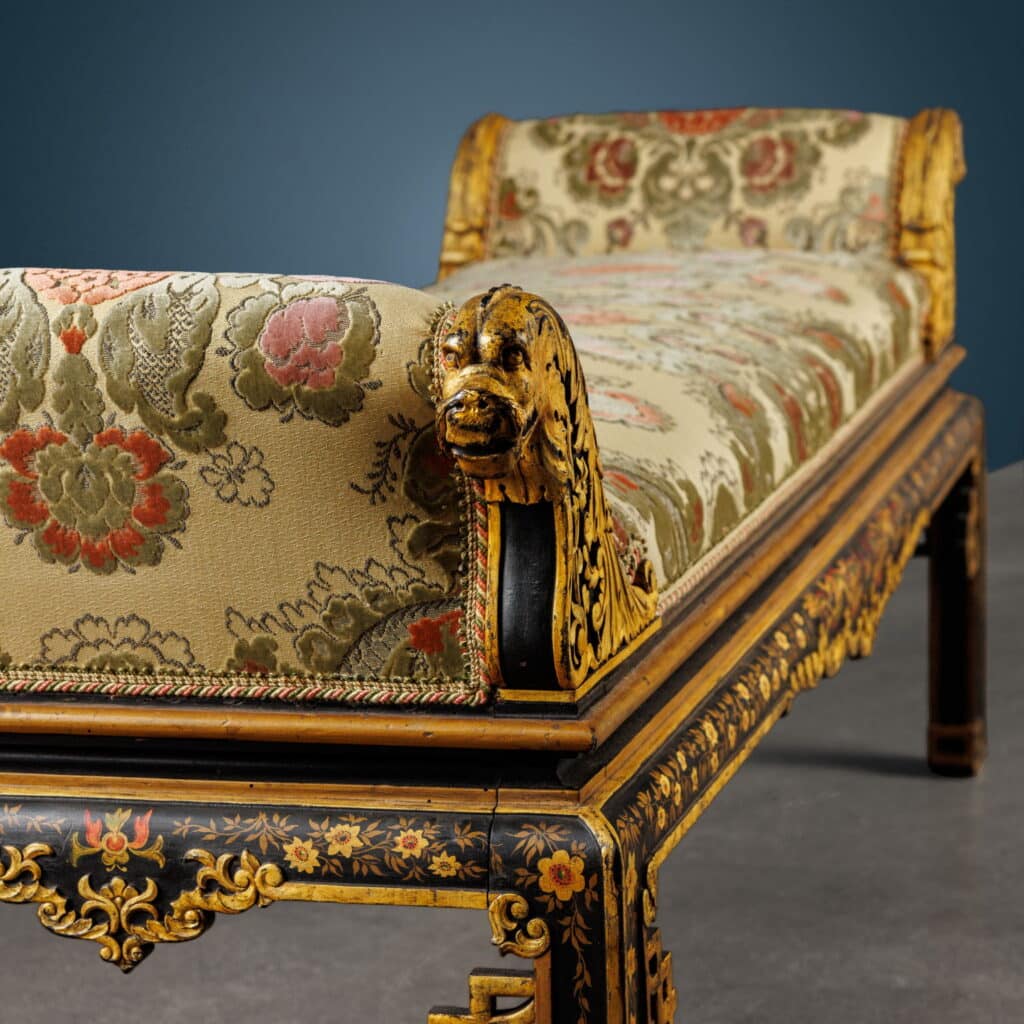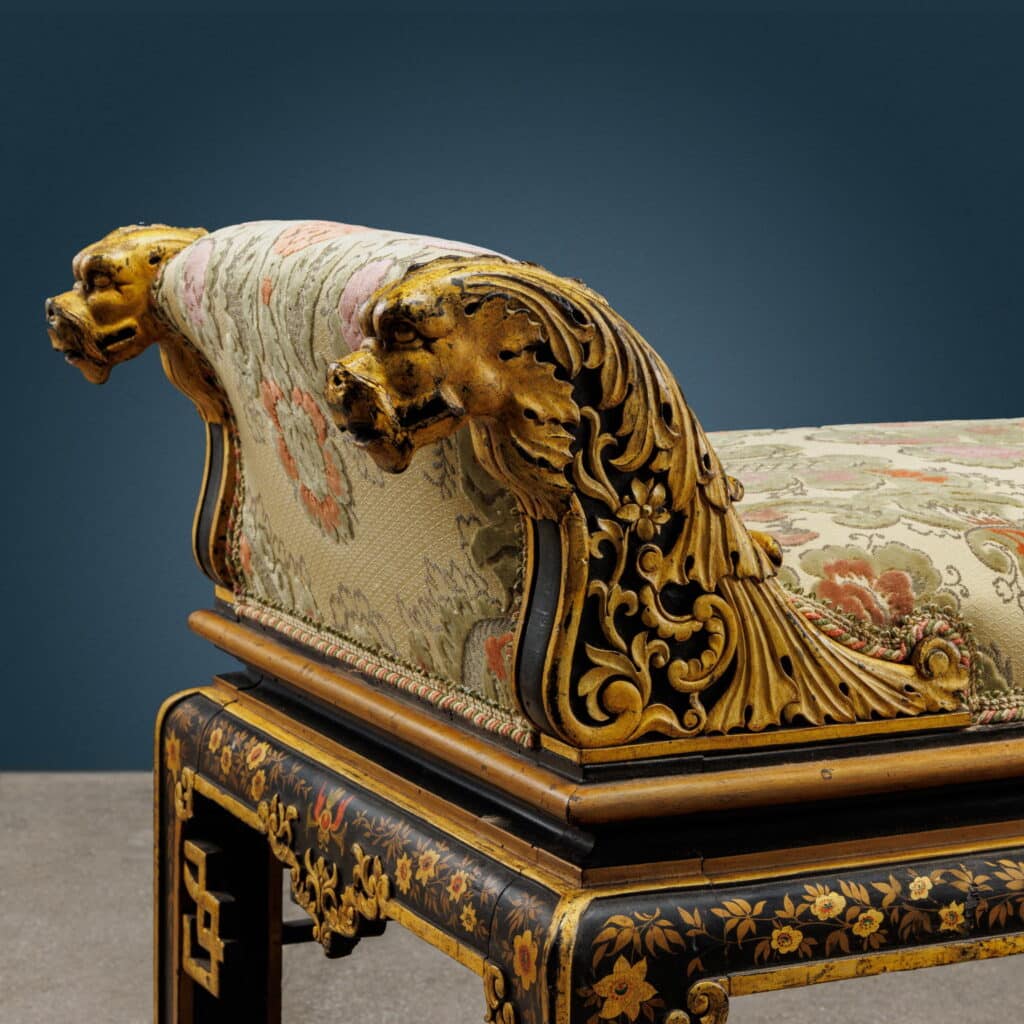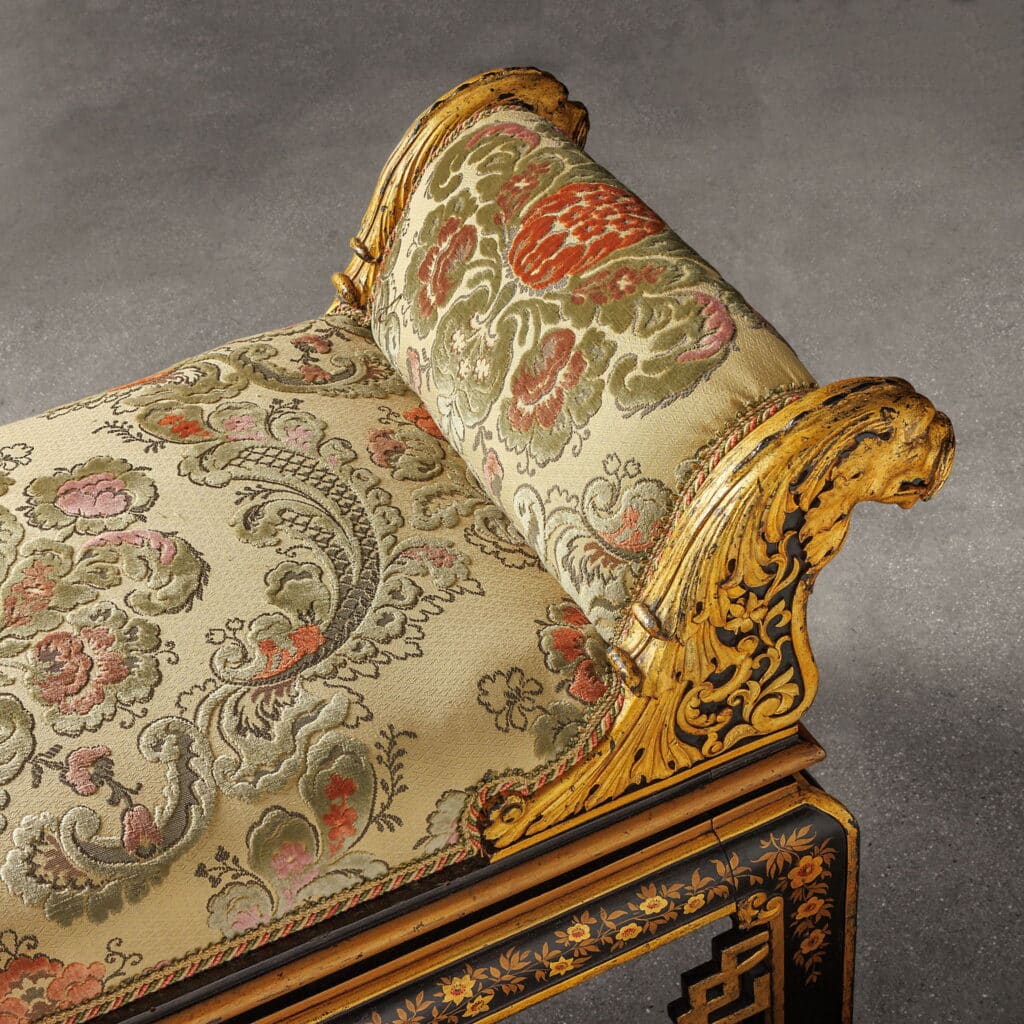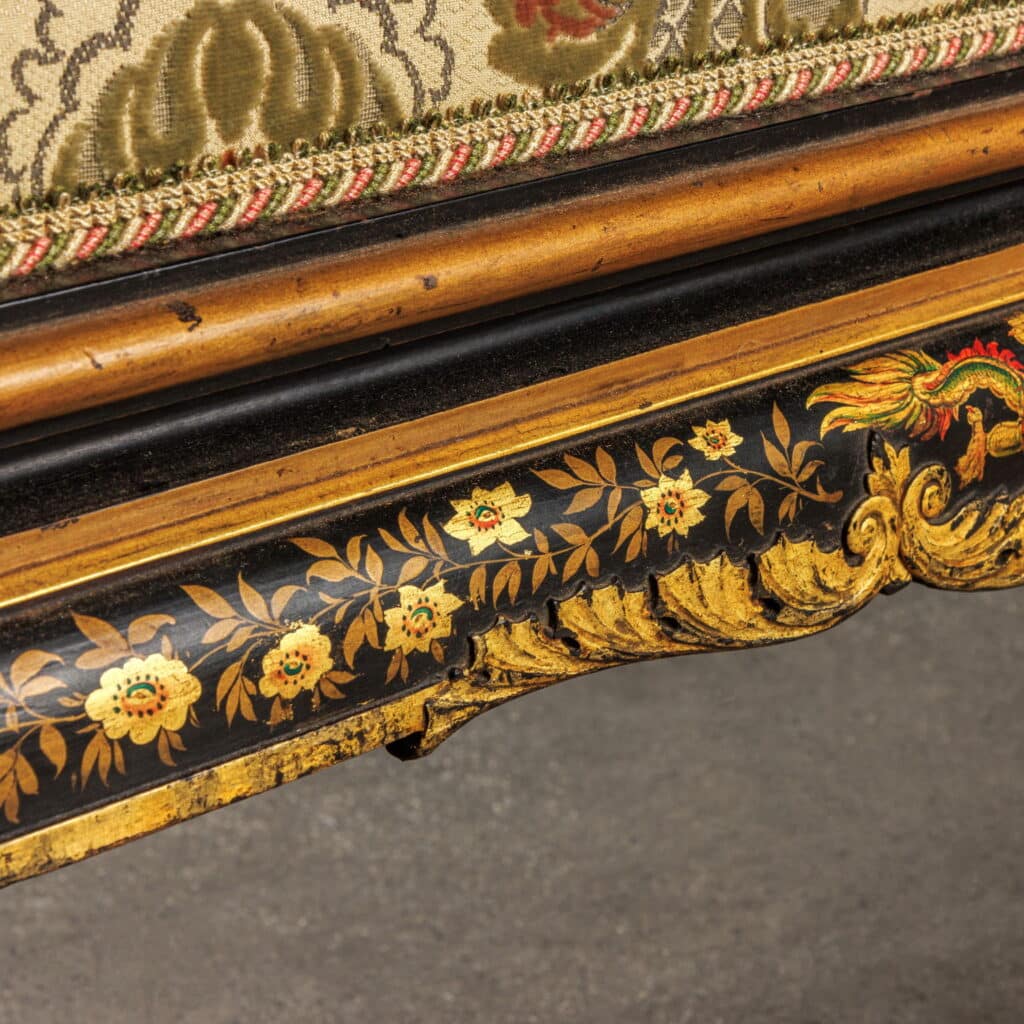Chinoiserie bench. Italy, second quarter of the 19th century
Description:
Walnut bench entirely lacquered in black and painted with chinoiserie floral and dragon motifs; finished with golden borders. The wavy armrests are supported by elements carved with fantastic animals with feral features. Revisitation of the fabric by designer Pietro Russo.
Dimensions: 60 x 173 x 45 cm
CODE: ANSESE0220339
Historical-stylistic analysis:
Our bench belongs to the production of the first half of the 19th century defined as chinoiserie, that is, with a style that recalls oriental shapes and decorative motifs. Already widespread at the end of the previous century, chinoiserie had a real diffusion in the nineteenth century, appreciated and requested by the main European courts.
The references to China and the Orient in general were capable of recalling an exoticism that was both appreciated on an aesthetic and cultural level. The calligraphy of the chinoiserie drawings, the heterogeneous bestiary (both real and fantastic) and the life scenes offered infinite decorative solutions for small objects and entire walls, creating interesting scenographic effects in the layout of the large rooms.
Among the main promoters of chinoiserie was King George IV who, with the construction of the Royal Pavilion in Brighton as a pleasure palace on the sea, decided to set up some of the rooms in this style. In particular, the Banqueting Room, the Long Gallery and the Music Room present furnishings, chandeliers, objects such as porcelain, but also carpets and windows, in an oriental style. The walls of the room dedicated to music were decorated with scenes of Chinese life, in gold on a red background, created by Frederick Crace and Henry Lambelet and taken from The Customs of China by William Alexander (1805).
In the Royal Pavilion, furniture, objects and hand-painted wallpapers exported from China coexist with others made in England, of an oriental taste mediated by Western gaze and fashions. There are numerous examples of chinoiserie even in Italian courts, a style loved in particular by the Savoys who chose it to set up some of the rooms in Stupinigi and Racconigi. Another example can be found in the Piedmontese wallpaper room, at the Quirinale Palace in Rome.

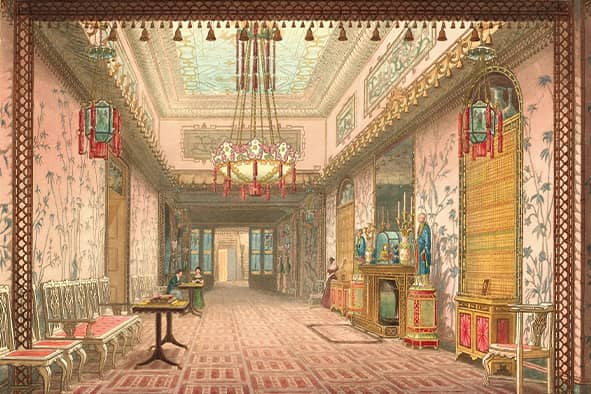

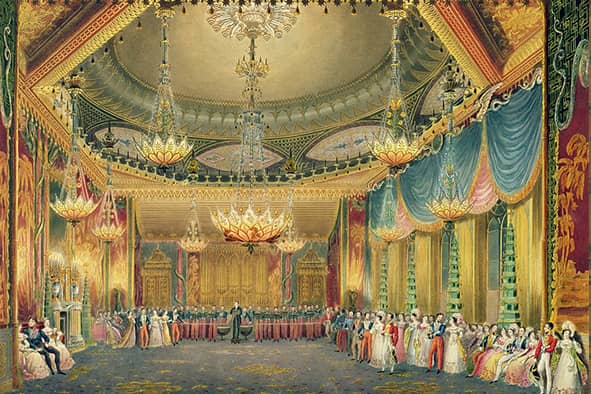
- Chinoiserie bench. Italy, second quarter of the 19th century

Antiques, Art and Design
FineArt is the new ambitious Di Mano in Mano project that offers an exclusive choice of antiques and design works, presenting them for their singularity and uniqueness.


